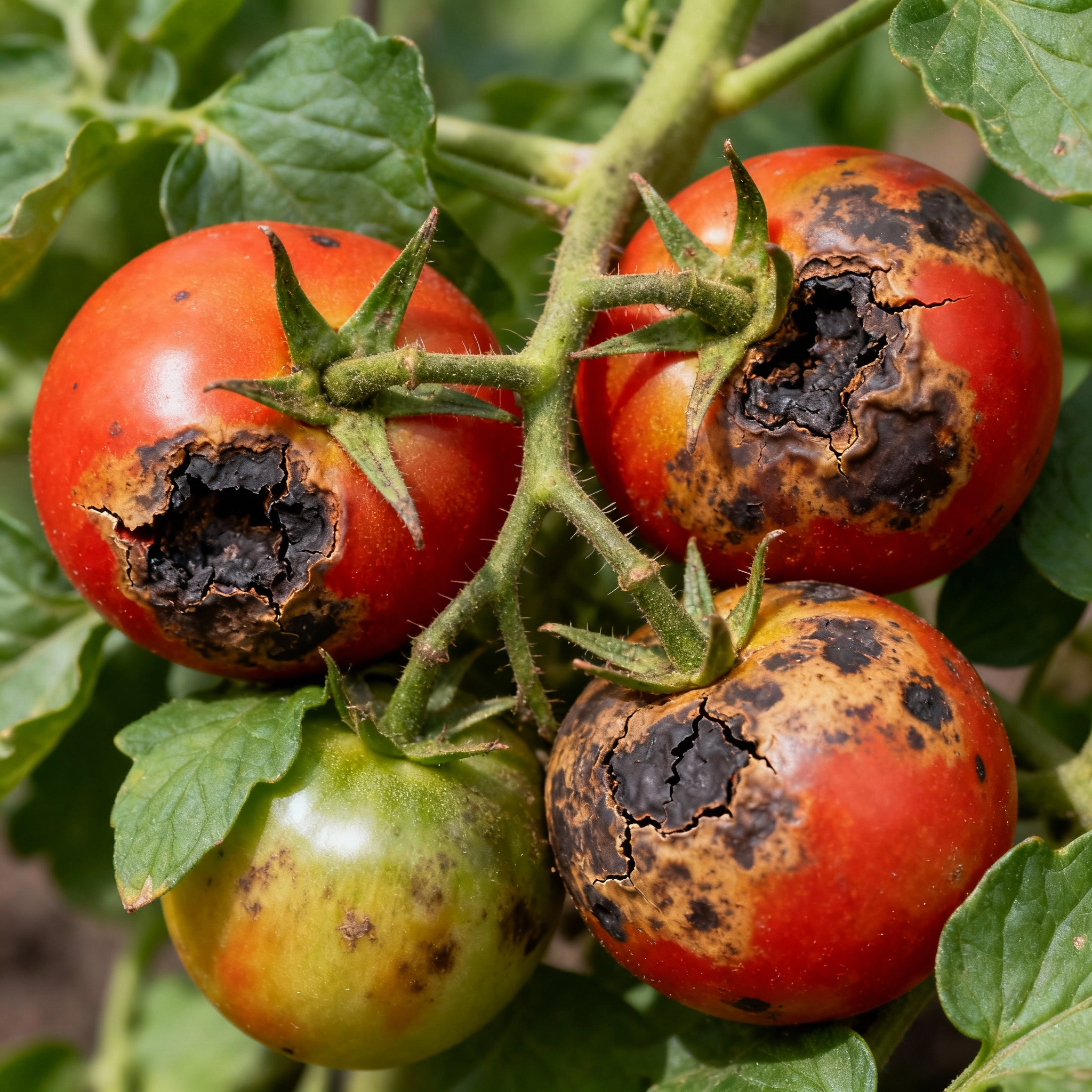- SHOPPING
15 Best Waist Trainers


Tomato plants are a staple in many gardens, cherished for their juicy fruits and vibrant presence. However, these beloved plants can sometimes fall victim to a frustrating issue known as blossom end rot. This condition not only affects the appearance and quality of the fruit but also disheartens gardeners who eagerly anticipate a bountiful harvest. Understanding the causes, signs, and solutions for blossom end rot is crucial for both novice and seasoned gardeners aiming to cultivate healthy tomato plants.
Blossom end rot is a physiological disorder that manifests as a dark, sunken spot on the blossom end of the tomato fruit. These spots can initially appear small and water-soaked but often expand, leading to a leathery texture and decay. While the disorder primarily affects tomatoes, it can also impact other fruiting plants like peppers and eggplants. Recognizing the detailed signs of blossom end rot early is essential for addressing the issue before it significantly affects the crop yield.
To prevent blossom end rot, it is vital to understand the nutritional needs of tomato plants. Tomatoes require a balanced supply of nutrients, particularly calcium, which plays a critical role in cell wall development. A deficiency in calcium can directly lead to blossom end rot, as the fruit’s tissue fails to develop properly. Ensuring that the soil is rich in essential nutrients and maintaining a consistent watering schedule can help mitigate the risk of nutrient-related disorders.
Calcium is indispensable for the healthy growth of tomato plants. It is involved in the formation of cell walls, which are crucial for the structural integrity of the plant. Without adequate calcium, tomatoes are prone to develop blossom end rot as the fruit lacks the necessary support to grow properly. Gardeners should test their soil regularly to ensure it contains sufficient calcium levels and consider amending the soil with lime or gypsum if deficiencies are detected.
For those new to gardening, tackling blossom end rot can seem daunting. However, there are straightforward solutions that can help manage this condition effectively. First, ensure that the soil is well-drained and consistently moist, as fluctuations in moisture levels can hinder calcium uptake. Mulching around the base of the plants can help retain soil moisture and regulate temperature.
Additionally, applying a calcium-rich foliar spray can provide an immediate boost to plants showing early signs of deficiency. It’s also important to avoid over-fertilizing, particularly with high-nitrogen fertilizers, as this can exacerbate the problem by promoting excessive foliage growth at the expense of fruit development.
Experienced gardeners may wish to employ more advanced techniques to prevent blossom end rot. One effective approach is the use of drip irrigation systems, which provide a consistent water supply directly to the plant roots, minimizing moisture fluctuations. Soil testing and amendment are also crucial; incorporating organic matter such as compost can improve soil structure and nutrient availability.
An unconventional yet effective method for addressing calcium deficiencies is the use of powdered milk. This household item can be mixed with water and applied to the soil or used as a foliar spray. The calcium in powdered milk is readily absorbed by plants, offering a quick remedy for blossom end rot. Gardeners should apply this solution early in the growing season to prevent the onset of symptoms.
Establishing optimal growing conditions is fundamental to preventing blossom end rot and ensuring a healthy tomato crop. Tomatoes thrive in well-drained, nutrient-rich soil with a pH between 6.0 and 6.8. Regular soil testing can help maintain these conditions by identifying nutrient imbalances or pH issues that may need correction.
Additionally, providing adequate spacing between plants promotes good air circulation, reducing the risk of fungal diseases and allowing for even distribution of sunlight. Consistent watering, particularly during dry spells, is vital for maintaining soil moisture and supporting healthy plant development.

For long-term success in tomato cultivation, gardeners should adopt a proactive approach to plant care. Crop rotation is essential to prevent soil-borne diseases and nutrient depletion. Avoid planting tomatoes in the same spot year after year; instead, rotate with crops from different plant families to maintain soil health.
Regular pruning of tomato plants can also enhance air circulation and light penetration, promoting robust growth and reducing disease incidence. Finally, maintaining a detailed garden journal to track planting dates, weather conditions, and any issues encountered can provide valuable insights for improving future tomato harvests.
In conclusion, understanding and addressing the underlying causes of blossom end rot can transform a challenging gardening experience into a rewarding one. By implementing both basic and advanced strategies, gardeners can enjoy healthy, vibrant tomato plants and a plentiful harvest season after season.